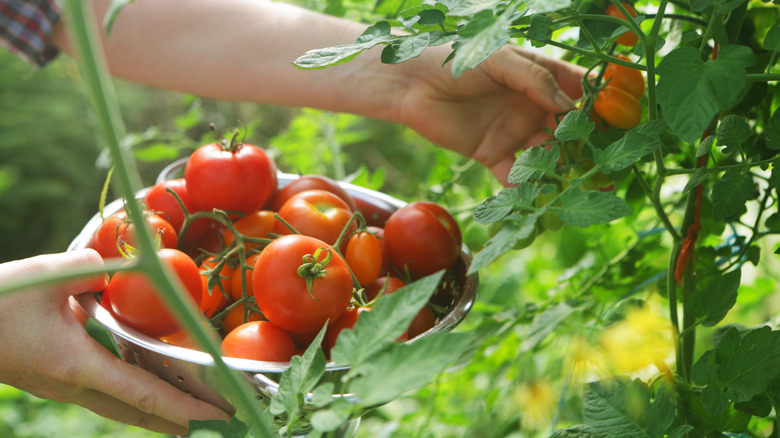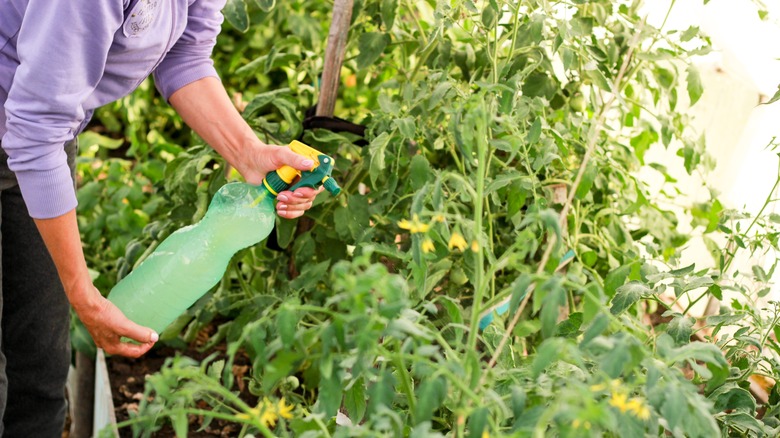Will Baker's Yeast Take Your Tomato Plants To The Next Level?
Growing ripe, juicy tomatoes is a gardener's delight, whether they're eaten fresh or made into the best tomato sauce ever. Of course, getting an abundant harvest and keeping plants healthy often means using fertilizer, and there are some DIY fertilizers that will help your plants thrive.
You may have heard that gardeners are achieving good results in fertilizing tomato plants with a baking staple: yeast. As it turns out, though, the jury's still out on that DIY method. A 2020 study published in the journal Agronomy did show that baker's yeast vinasse (a byproduct of baker's yeast) combined with selenium and sprayed on the plant's foliage has been proven effective as a fertilizer to produce more marketable fruit with increased nutritional properties. However, it's important to note straight yeast out of the pantry wasn't tested. Scientific studies have also shown that brewer's yeast can stimulate plant growth during the early stages of development when used as a fertilizer, but most people don't readily have that on hand.
With that said, some gardeners still use standard store-bought baker's yeast to fertilize tomato plants during various growth stages and claim to have healthy growth and a bountiful crop. Should you try it on your own precious plants? Since many people are doing it without reporting adverse effects — and some go as far as rave about it — it probably won't hurt anything. For proven results, though, you may decide to stick to mineral fertilizer you can pick up at your local garden center.
More on fertilizing your tomato plants
For those willing to experiment with this kitchen staple in the garden, you can make a foliar spray by combining 1 ounce of baker's yeast with about 2 1/2 gallons of warm water. Mix well, and let your fertilizer sit for at least an hour before spraying directly on the leaves of your tomato plants.
If you've decided to forego the baker's yeast, stick with a balanced 8-8-8 mineral fertilizer as an alternative, according to NC State Extension. That will provide an equal measure of nitrogen, phosphorus, and potassium to feed your plants. For a first application right after you get your tomatoes planted, mix 3 to 4 tablespoons of fertilizer with a gallon of water. Give each plant one cup of food, but no more than that, to get them off to a good start. Tomatoes don't like to be fertilized in excess — you can burn young plants with too much and mature plants will produce plenty of foliage and no fruit if they're fed too much.
After that, plan to side-dress your tomato plants with 8-8-8 fertilizer when you see the first fruit, and about every 4 to 6 weeks afterward as long as the plants are still growing. This means applying about 2 to 3 tablespoons of fertilizer about 4 inches away from the stems of your plants rather than putting it directly at the base. With proper fertilization, you may have to prune your tomato plants to keep them healthy and productive.

